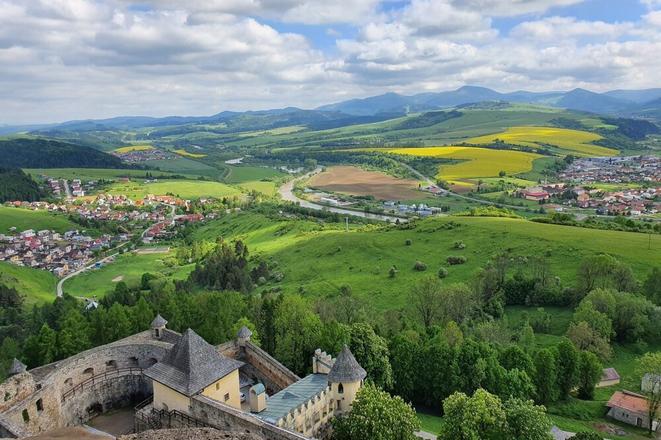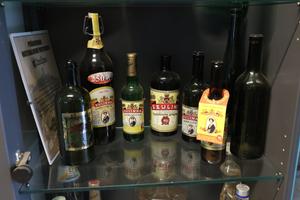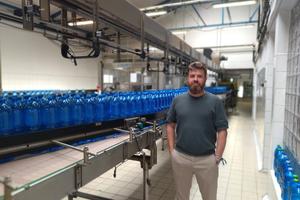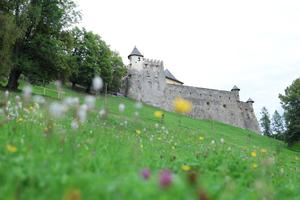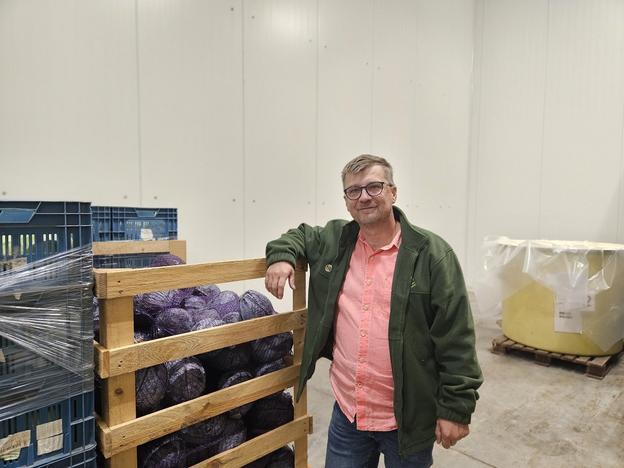You can read this exclusive content thanks to the FALATH & PARTNERS law firm, which assists American people with Slovak roots in obtaining Slovak citizenship and reconnecting them with the land of their ancestors.
Navigating from the Poprad highway to the upper Spiš region can be a challenge. The roads are often under repair or winding, making the 60-kilometre journey to the town of Stará Ľubovňa, northeastern Slovakia, take over an hour. Yet, the slow drive is undoubtedly rewarding.
Along the way, you will pass through picturesque towns in the Spiš region, such as Kežmarok, Spišská Belá, and Podolínec. Although the German community that once thrived in these towns has largely dissipated, the towns' character as historical centres of trade endures.
As you travel from Kežmarok to Podolínec, consider stopping in the village of Toporec. Here, a local farm offers fresh cheese and dairy products. Owned by the TIS company, which was founded 30 years ago by brothers Luboš and Rastislav Regec, the farm has an interesting backstory. Initially, the brothers traded in vegetables and fruits sourced from southern Slovakia. However, the rise of supermarkets in the early 2000s forced them out of the market due to competitive pricing.
In response, the Regec brothers sought high-quality vegetables that could not be found in supermarkets, leading them to cultivate their own cabbage and potatoes. Their primary focus is on sauerkraut production, yielding up to 100 tonnes annually, alongside 30 to 50 tonnes of potatoes. Visitors to their facility in Stará Ľubovňa can sample the crisp, tangy sauerkraut straight from the vats. They also produce a drink known as ‘Ľubovniansky gumidžús’, made from sour cabbage juice and flavoured with ingredients like turmeric, giving it a vibrant yellow hue.
Additionally, the Regec brothers pickle cucumbers sourced from growers across the Dunajec River in Poland. They prioritise regional suppliers to reduce the carbon footprint of their products, believing that there is no need to transport vegetables from far afield to Slovakia.
“Brick” cheeses: a local delight from Toporec
Historical names of towns and villages in the Stará Ľubovňa and Kežmarok districts
Today's territory of Slovakia was part of different monarchies throughout history, including the Austro-Hungarian Empire from 1867 until 1918. Until 1992, with the exception of the inter-war years 1939-1945 during which the Nazi-aligned Slovak state existed, the territory was a part of Czechoslovakia. As a result, the current names of Slovak municipalities were different.
Here's a list of the largest municipalities in the Stará Ľubovňa and Kežmarok districts with their historical names:
Stará Ľubovňa district
Podolínec (Pudlein, Podolin)
Stará Ľubovňa (Ólubló )
Toporec (Toportz,Toporc)
Vyšné Ružbachy (Felsőzúgó)
Malý Lipník (Kishárs)
Mnišek nad Popradom (Poprádremete)
Hniezdne (Kniesen, Gnézda)
Kežmarok district
Kežmarok (Käsmark,Késmárk)
Spišská Belá (Szepesbéla)
Spišská Stará Ves (Alterndorf, Szepesófalu)
Slovenská Ves (Szepestótfalu)
Veľká Lomnica (Gross-Lomnitz,Kakaslomnic)
Lendak (Lándok)
The full list of all Slovak municipalities, including their historical names, can be found at ww.geni.sk (in Slovak only).
In 2011, the Regec brothers acquired part of a former state farm in Toporec, where they began raising cows and sheep. Since then, they have expanded their production to include a range of dairy products—yogurts and cheeses crafted without artificial preservatives. Their yogurts ferment in the bottle for up to 14 days, resulting in a distinctive tanginess. They favour glass packaging for their dairy, believing that it preserves the integrity of flavour.
“We don’t pasteurise our milk or yogurt because we want the live bacteria to thrive; preservatives would kill them,” explained Ľuboš Regec, co-owner of the business.
Over the past two years, this family-run enterprise has gained a reputation for its special cheeses, which have become a local favourite. After a customer expressed a desire for a cheese that could be grilled like halloumi, the Regecs experimented until they uncovered a recipe from a local woman. They now produce this cheese under the brand name Tatranský tehlový syr (Tatra brick cheese). Recently, they have also added a slaughterhouse to their operations, with plans to produce cured salami.
Their products are primarily sold at farm shops and quality regional restaurants, as well as at Kaufland, which features a farm counter, and in the company store located at the farm in Toporec.
Looking ahead, Regec envisions transforming the park near the farm—complete with a mansion—into a vibrant market showcasing local products from various producers. This market will also include a children's playground and recreational areas.
Regec lamented the absence of a regular market in Stará Ľubovňa, contrasting it with the bustling Thursday and Saturday markets in nearby Nowy Targ, southern Poland. He noted that this tradition has persisted through the years, even during the communist era, thanks to the preservation of private property in Poland, unlike Slovakia.
Why the castle lures Polish visitors
Perched near Stará Ľubovňa, the beautifully reconstructed Stará Ľubovňa Castle stands as the region’s primary draw for tourists, particularly those from Poland. This area, located on the border, boasts not only the impressive castle but also an open-air museum showcasing folk architecture and a military exhibition.
“The city attracts many Poles because it was under Polish protection for 360 years and also housed the Polish crown jewels. This historical connection has forged a unique bond between the city and the Polish people,” said Ľuboš Tomko, the mayor of Stará Ľubovňa.
Tomko believes there is immense potential to attract even more visitors, prompting local authorities to invest in restoring the castle grounds and improving walkways while creating new photo opportunities. However, challenges remain.
“We welcome around 200,000 tourists annually, but the poor condition of our bus and train stations deters some visitors. Unfortunately, these stations are owned by transport companies, not the town,” explained Tomko.
Recent developments have seen the creation of more cycling routes throughout the town and its surroundings. The mayor envisions expanding these routes to Nová Ľubovňa, a spa town ripe for increased tourist traffic. Along the way lies Victoria's Gardens, home to the largest green maze in Central Europe.
“Tourism is evolving; not everyone seeks crowded spots like Rysy (peak) in the High Tatras. Some prefer to explore nearby Levočské vrchy or Vysoké Skalky (hills) by bike, where they can enjoy breathtaking views of the Pieniny Mountains and the High Tatras without the throngs of tourists,” Tomko added.
Tourism in crisis
While the mayor of Stará Ľubovňa exudes optimism about the region’s future, Johan Koneval, the owner of the U Financa cottage and campsite in Malý Lipník paints a starkly different picture. He believes tourism in the area is in a state of decline.
Despite the advantages of his guest house—nestled alongside the River Poprad, ideal for rafting, and linked by cycling routes to two large spa towns in southern Poland—the owner feels the local tourism sector is struggling.
“People here have grown accustomed to relying on the welfare state and are unwilling to work. We’re short-staffed, so I have to manage the business almost single-handedly, with only my family’s help, especially on weekends,” he lamented. His wife, a teacher, and occasionally his daughter, who is studying medicine in Bratislava, lend a hand.
“Everything you see in my guest house and its surroundings has come from my own money and passion. I’ve invested around half a million euros here,” he explained. He opts not to use European Union funds, having refused to pay 30 percent commissions to political appointees of the Smer party, which is currently in power for the fourth time. “The Poles know how to utilise EU funds better—they don’t steal them before the project even starts, which happens here in Slovakia,” he asserted.
At one point, he considered selling the cottage due to burnout, but a lack of buyers has compelled him to continue running the business. “I’m not selling it anymore; I’m going to cherish it and improve it,” he said.
His primary motivation lies with domestic clients, who remain loyal, but he relies heavily on Polish tourists, who constitute about 95 percent of his visitors. “Poles have no issue paying €2.50 for a beer, unlike Slovaks. They also tend to drink more expensive whisky rather than cheap vodka,” he noted.
While he does not wish to operate a pub, some local regulars have complained about the price of his beer. “A bed here costs €25, which is a pittance for people from Bratislava but expensive for those from eastern Slovakia,” he explained, highlighting the disparity in purchasing power.
The cottage owner, situated on the Polish border, does not limit his business to the summer months; he also runs a ski lift in winter. However, he feels unsupported by the village and locals, who dispute the ownership of the land beneath the lift. “Instead of supporting the tourism sector, they’re showing me disrespect,” Koneval added.
Mineral water family eyes expansion into Poland
Nestled near the Ľubovnianske Spa, a mineral water factory owned by the Špes family harnesses the natural springs of the region. Just a few hundred metres beyond the factory, three springs yield the local mineral water that fills their bottles.
The venture into soft drinks began at the turn of the millennium when Ján Špes recognised a unique opportunity in the mineral water market. Taking a leap of faith, he drilled an exploratory well at Ľubovnianske Spa, uncovering a rich spring that would birth the Ľubovnianka brand. Later, he revived a neglected spring in the village of Sulín, adding Sulinka mineral water to their offerings. Historical bottles from that era still adorn the family collection, a nod to their rich heritage.
As the next generation took charge, Ján’s two sons gradually assumed management roles, with some of their children and extended family also joining the ranks. In May, Dominik Špes stepped into the executive management position, while Ján shifted his focus to strategic initiatives, including plans to restore the dilapidated Ľubovnianske Spa.
However, the Špes family faces fierce competition from major retail chains and attempts to penetrate the food service sector. Tomáš Špes, the business director, acknowledges the daunting challenge posed by giants like Kofola and Coca-Cola, which boast extensive sales teams. In contrast, the family company relies on a single sales representative and a modest marketing budget.
Tomáš believes success in the competitive Slovak market depends on the mineral water’s unique composition and pricing, highlighting Ľubovnianka’s magnesium content as a significant health benefit. Even at a restaurant in the heart of Stará Ľubovňa, where he shared his insights with The Slovak Spectator, umbrellas bearing the logos of Romelquelle and Coca-Cola loomed large. Yet, the Špes family remains resolute, recently making strides into the Czech supermarket chain Globus.
“We also plan to enter the Polish market, despite the strong domestic players,” Tomáš asserted, eyeing the untapped potential across the border.
His brother Dominik expressed even bolder aspirations, claiming their ultimate goal is to outpace the production volume of the leading mineral water brand, Budiš.
Spectacular Slovakia travel guides
A helping hand in the heart of Europe thanks to our Slovakia travel guide with more than 1,000 photos and hundred of tourist spots.
Our detailed travel guide to the Tatras introduces you to the whole region around the Tatra mountains, including attractions on the Polish side.
Lost in Bratislava? It's impossible with our City Guide!
See some selected travel articles, podcasts, traveller infoas well as other guides dedicated to Nitra, Trenčín Region, Trnava Region and Žilina Region.


